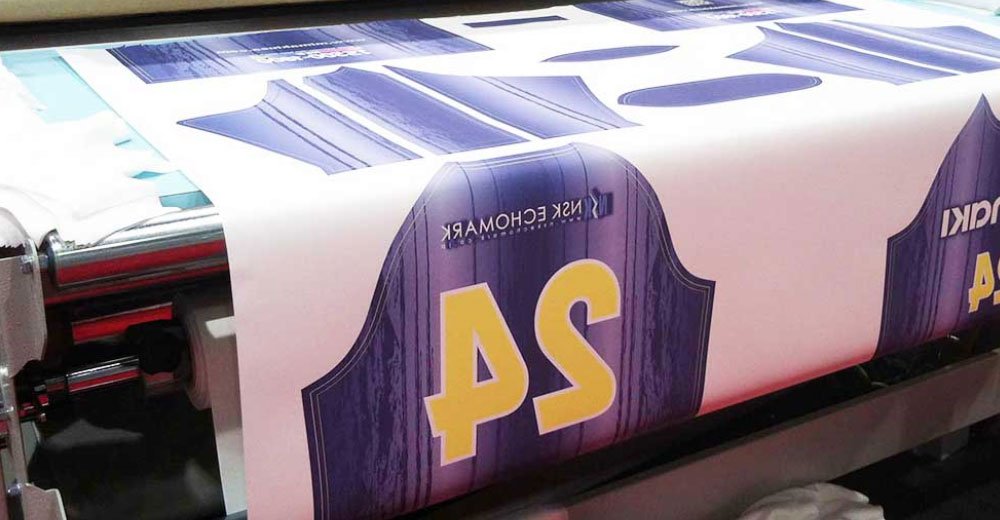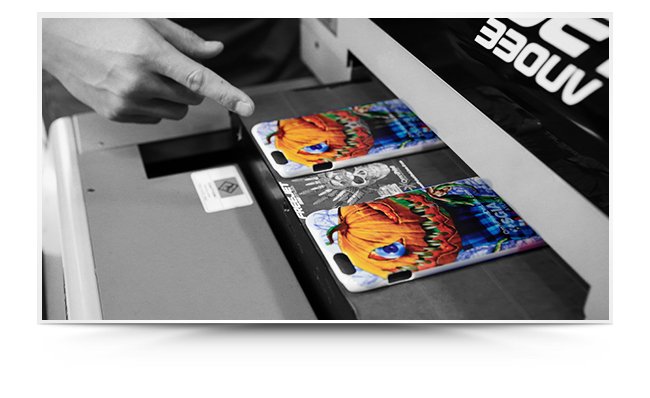
Silkscreen Printing
Silkscreen printing, also known as screen printing, is a popular and widely used method for printing designs on apparel. It involves creating a stencil (or screen) and using it to apply layers of ink on the printing surface. This method is favored for its durability, vibrant colors, and ability to print on various materials.
Advantages of Silkscreen Printing
- Durability: Produces long-lasting prints that withstand repeated washing and wear.
- Vibrant Colors: Capable of producing bright, opaque colors on both light and dark fabrics.
- Versatility: Can print on a wide range of materials, including cotton, polyester, blends, and more.
- Cost-Effective for Large Runs: Economical for high-volume orders due to the reusable nature of the screens and the efficiency of the process.
Disadvantages of Silkscreen Printing
- Setup Time and Cost: Initial setup is time-consuming and costly, making it less ideal for small or one-off orders.
- Limited Color Range: Each color requires a separate screen, making multi-color designs more complex and costly.
- Environmental Concerns: Uses chemicals and inks that require proper disposal and management to minimize environmental impact.

Heat Transfer
Heat transfer printing on apparel is a popular technique used to apply designs, logos, and graphics onto clothing items such as t-shirts, hoodies, caps, and more. This method is favored for its ability to produce vibrant, detailed prints and its versatility for small and custom orders.
Advantages of Heat Transfer Printing
- Versatility: Works on various fabric types and allows for detailed, multi-color designs.
- Customization: Ideal for small runs, personalized items, and on-demand printing.
- Color Quality: Produces vibrant and precise prints with fine details.
Disadvantages of Heat Transfer Printing
- Durability: Some methods, like heat transfer paper, may not be as durable as screen printing, especially if not properly applied or maintained.
- Cost: Can be more expensive for large quantities due to the cost of transfer materials and printing.

Direct-to-Film (DTF) Printing
Direct-to-Film (DTF) printing is an innovative and increasingly popular method for applying designs to apparel. This technique involves printing a design onto a special film and then transferring it onto fabric using a heat press. DTF printing is known for its versatility, vibrant colors, and ability to print on various materials.
Advantages of DTF Printing
- Versatility: Can be used on a wide range of fabrics, including cotton, polyester, blends, nylon, and more.
- Vibrant Colors: Produces bright and detailed prints with excellent color vibrancy and opacity.
- Durability: Transfers are durable and can withstand repeated washing and wear.
- No Weeding Required: Unlike HTV, DTF does not require weeding (removing excess material) around the design, saving time and effort.
- Soft Hand Feel: Results in a soft and flexible print that does not crack or peel easily.
Disadvantages of DTF Printing
- Initial Investment: Requires specialized equipment (DTF printer, curing oven, heat press) and materials (PET film, DTF inks, adhesive powder).
- Complex Process: The process involves multiple steps, including powder application and curing, which require careful handling.
- Environmental Considerations: Uses chemicals and consumables that need proper disposal and management to minimize environmental impact.

Embroidery
Embroidery printing, or simply embroidery, is a traditional and elegant method for adding designs to apparel. It involves stitching patterns, logos, or text directly onto the fabric using thread. Embroidery is known for its durability, texture, and professional appearance, making it a popular choice for corporate apparel, uniforms, and personalized items.
Advantages of Embroidery
- Durability: Embroidery is highly durable and can withstand frequent washing and wear without fading or peeling.
- Professional Appearance: Embroidered designs have a high-end, professional look, making them ideal for corporate apparel and uniforms.
- Texture and Dimension: The raised, textured look of embroidery adds a unique and tactile quality to the design.
- Versatility: Suitable for various fabrics, including cotton, polyester, denim, and more.
Disadvantages of Embroidery
- Complex Designs: Highly detailed or intricate designs may be challenging to reproduce accurately with embroidery, especially at small sizes.
- Cost: Embroidery can be more expensive than other printing methods, especially for complex or multi-colored designs, due to the labor and materials involved.
- Fabric Limitations: While versatile, very thin or stretchy fabrics may not be ideal for embroidery, as they can pucker or distort.

Sublimation
Sublimation printing is a popular and highly effective method for applying designs to apparel, particularly on polyester fabrics. This process involves transferring dye onto fabric using heat, resulting in vibrant, long-lasting prints that are embedded into the fabric rather than sitting on top of it.
Advantages of Sublimation Printing
- Vibrant Colors: Produces bright, high-quality prints with excellent color saturation and detail.
- Durability: The dye bonds with the fabric fibers, making the print resistant to fading, cracking, and peeling, even after repeated washing.
- Soft Hand Feel: Since the dye is embedded into the fabric, the print does not add any additional layer or texture, maintaining the softness and breathability of the garment.
- Versatility: Ideal for all-over prints, complex designs, and photographic images.
Disadvantages of Sublimation Printing
- Fabric Limitation: Works best on white or light-colored polyester fabrics. It is not suitable for cotton or dark-colored fabrics, as the dye cannot bond effectively with these materials.
- Initial Investment: Requires specialized equipment, including a sublimation printer, transfer paper, and heat press.
- Color Accuracy: May require color profiling and adjustments to achieve accurate color reproduction.

UV Print
UV printing is an excellent choice for customizing corporate gifts due to its ability to produce high-quality, durable, and vibrant prints on a wide range of materials. Corporate gifts often include items such as pens, notebooks, drinkware, USB drives, and other promotional products that benefit from the precise and long-lasting nature of UV printing.
Advantages of UV Printing for Corporate Gifts
- High-Quality Prints:
- UV printing produces sharp and detailed prints with vibrant colors, making logos and designs stand out.
- Durability:
- The UV-cured inks are resistant to scratching, fading, and water, ensuring that the printed design remains intact even with frequent use.
- Versatility:
- UV printing can be applied to a wide range of materials, including plastic, metal, glass, wood, and more. This flexibility allows for customization of various corporate gift items.
- Fast Production:
- The immediate curing process of UV printing allows for faster turnaround times, making it ideal for bulk orders and tight deadlines.
- Special Effects:
- UV printing can create unique textures and raised effects, adding a premium feel to corporate gifts.
Common Corporate Gifts for UV Printing
- Pens and Writing Instruments:
- Custom logos and designs can be printed on the barrel of pens, pencils, and markers, making them practical and stylish gifts.
- Drinkware:
- UV printing can be used on mugs, water bottles, tumblers, and glassware, providing a durable and visually appealing finish.
- Tech Accessories:
- Items like USB drives, power banks, and phone cases can be personalized with company logos or messages.
- Notebooks and Planners:
- Custom designs can be printed on the covers of notebooks, planners, and diaries, making them both functional and promotional.
- Keychains and Lanyards:
- Small items like keychains and lanyards can be easily customized with UV printing, adding a personal touch to everyday items.
- Office Supplies:
- Items such as mousepads, desk organizers, and business card holders can be printed with company branding.
- Home and Lifestyle Products:
- Products like coasters, photo frames, and decorative items can be customized with UV printing to create unique and memorable gifts.

Engraving
Engraving is a classic and sophisticated method for personalizing corporate gifts. It involves cutting or etching a design, logo, or text into the surface of an item using a laser or mechanical engraving machine. This process is highly precise, resulting in durable and elegant designs that enhance the perceived value of the gift.
Advantages of Engraving
- Durability: Engravings are long-lasting and resistant to wear and fading, ensuring the design remains intact over time.
- Elegance: Engraved designs have a high-end, professional appearance, making them ideal for premium corporate gifts.
- Precision: Both laser and mechanical engraving offer high precision, allowing for intricate and detailed designs.
- Versatility: Suitable for a wide range of materials and items, providing flexibility in choosing corporate gifts.
Disadvantages of Engraving
- Cost: Engraving can be more expensive than other customization methods, especially for complex or large designs.
- Material Limitations: Not all materials are suitable for engraving. For example, some plastics and soft materials may not yield the best results.
- Setup Time: Requires careful setup and alignment, which can be time-consuming, particularly for bulk orders.
Common Corporate Gifts for Engraving
- Pens: Metal pens with engraved logos or personalized names.
- Plaques and Awards: Wood, glass, or metal plaques and awards with engraved messages and logos.
- Drinkware: Stainless steel or glass drinkware, such as mugs, tumblers, and water bottles.
- Tech Accessories: Items like USB drives, power banks, and phone cases.
- Desk Items: Metal or wooden business card holders, letter openers, and desk nameplates.
- Keychains: Metal or leather keychains with company logos or personalized engravings.

